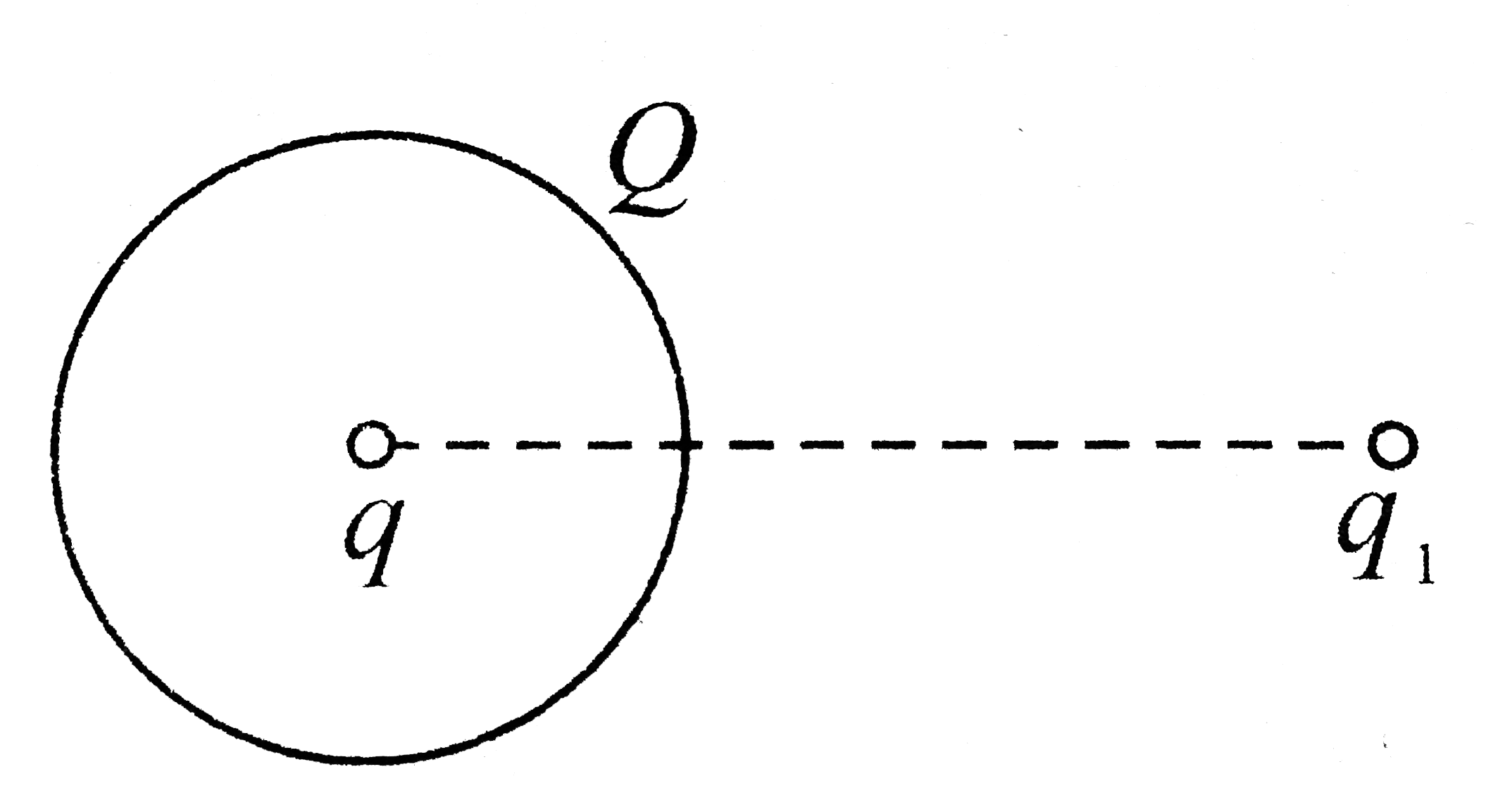A point charge q is placed in a cavity in a metal block. If a charge Q is brought outside the metal, will the charge q feel an electric force?
To determine whether a point charge q placed in a cavity within a metal block will feel an electric force when another charge Q is brought outside the metal, we can analyze the situation step by step.
1. Understanding the Setup:
- We have a point charge q located inside a cavity of a metal block.
- A charge Q is placed outside the metal block.
2. Concept of Electrostatic Shielding:
- Metal conducts electricity and contains free electrons that can move in response to electric fields.
- When an external charge Q is brought near the metal, the free electrons in the metal will rearrange themselves to counteract the electric field produced by Q.
3. Effect of External Charge on the Metal:
- The rearrangement of free electrons creates an induced charge distribution on the surface of the metal.
- This induced charge distribution generates an electric field that cancels the electric field inside the metal.
4. Field Inside the Cavity:
- Inside the cavity, the electric field due to the external charge Q is completely shielded by the induced charges on the metal surface.
- According to Gauss's Law, the net electric field inside a conductor in electrostatic equilibrium is zero.
5. Conclusion:
- Since the electric field inside the cavity is zero due to the shielding effect of the metal, the point charge q will not feel any electric force from the external charge Q.
- Therefore, the answer is No, the charge q will not feel an electric force when charge Q is brought outside the metal.
- We have a point charge q located inside a cavity of a metal block.
- A charge Q is placed outside the metal block.
- Metal conducts electricity and contains free electrons that can move in response to electric fields.
- When an external charge Q is brought near the metal, the free electrons in the metal will rearrange themselves to counteract the electric field produced by Q.
- The rearrangement of free electrons creates an induced charge distribution on the surface of the metal.
- This induced charge distribution generates an electric field that cancels the electric field inside the metal.
- Inside the cavity, the electric field due to the external charge Q is completely shielded by the induced charges on the metal surface.
- According to Gauss's Law, the net electric field inside a conductor in electrostatic equilibrium is zero.
- Since the electric field inside the cavity is zero due to the shielding effect of the metal, the point charge q will not feel any electric force from the external charge Q.
- Therefore, the answer is No, the charge q will not feel an electric force when charge Q is brought outside the metal.
Topper's Solved these Questions
Similar Questions
A point charge q1 is placed inside cavity 1 and another point charge q2 is inside cavity 2. A point charge q is placed outside the conductor. For the situation described above, answer the following questions.

The charge on outer surface of the conductor would be
View SolutionA point charge q1 is placed inside cavity 1 and another point charge q2 is inside cavity 2. A point charge q is placed outside the conductor. For the situation described above, answer the following questions.
If charge q2 is at point Q (inside cavity 2), then →E at the center of cavity 2 due to induced charge on the surface of cavity 2 would be
View SolutionA point charge q1 is placed inside cavity 1 and another point charge q2 is inside cavity 2. A point charge q is placed outside the conductor. For the situation described above, answer the following questions.
If the potential of the conductor is V0 and charge q2 is placed at the center of cavity 2, then potential at point Q is
View SolutionA point charge q1 is placed inside cavity 1 and another point charge q2 is inside cavity 2. A point charge q is placed outside the conductor. For the situation described above, answer the following questions.
→E inside the conductor at point S distant r from point charge q, due to charge on outer surface of the conductor, would be
View SolutionA thin metallic spherical shell contains a charge Q on it. A point charge q is placed at the center of the shell and another charge q1 is placed outside it as shown in the figure. All the three charges are positive. Find the force on the charge

a. at centre due to all charges.
b. at center due to shell.
View SolutionA thin metallic spherical shell carries a charge Q on it. A point charge Q1 is placed at the centre of the shell and another charge q is placed outside as shown in figure ahead. All the charges are positive . Discuss the various forces acting on Q1.

View SolutionTwo point charges +4q and +q are placed at a distance L apart. A third charge Q is so placed that all the three charges are in equilibrium. Then location. And magnitude of the third charge will be
View SolutionTwo free point charges +qand+4q are placed apart a distance x. A third charge is so placed that all the three charges are in equilibrium. Then
View SolutionA metallic sphere having no net charge is placed near a finite metal plate carrying a positive charge. The electric force on the sphere will be
View SolutionA metallic partical having no net charge is placed near a finite metal plate carrying a positive charge. The electric force on the particale will be
View Solution
